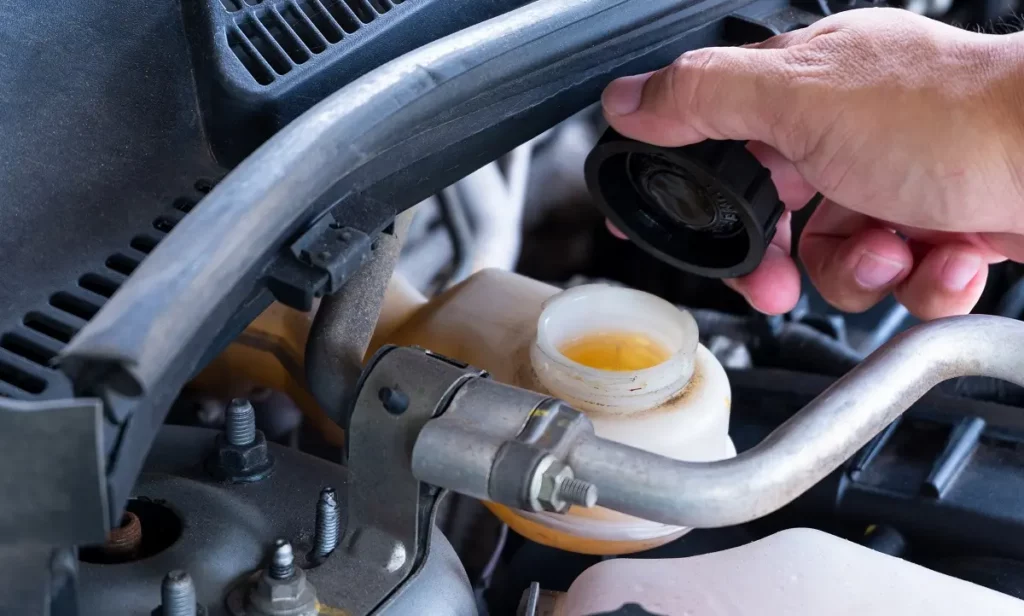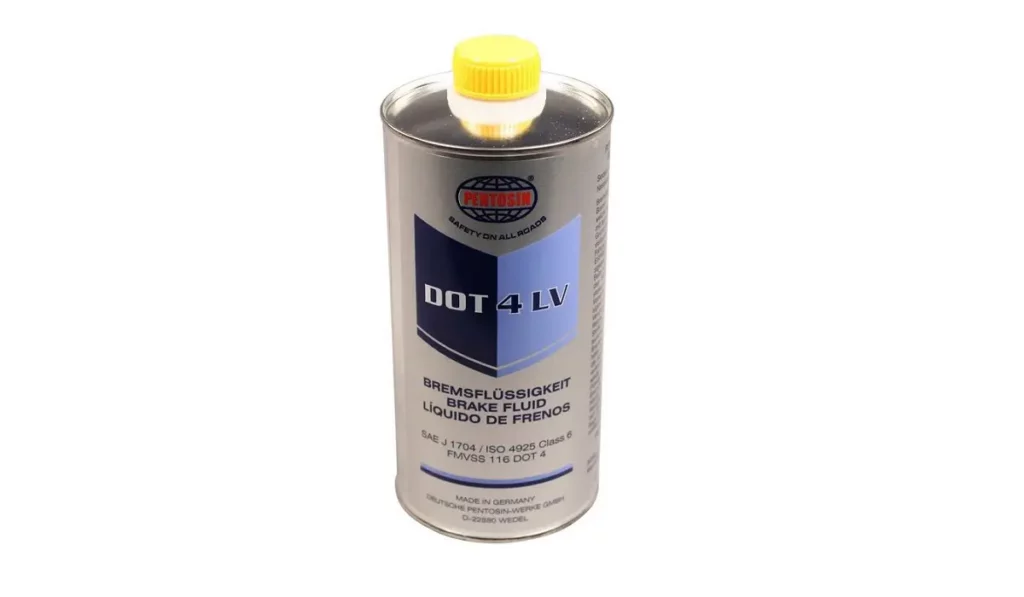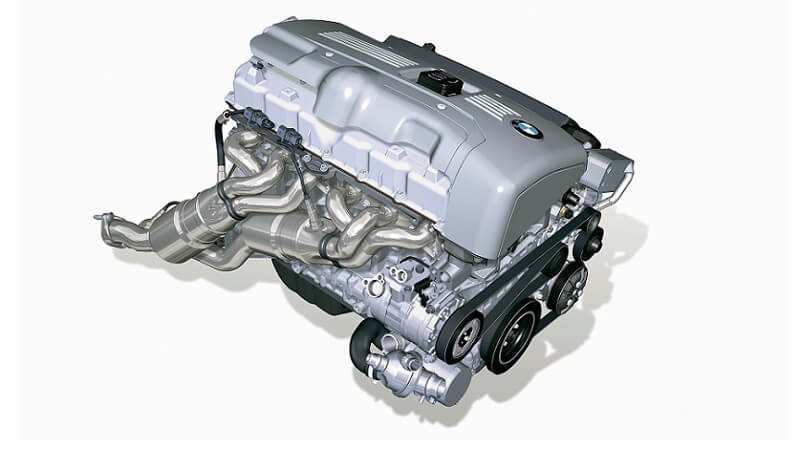Brake fluid is a critical component in a vehicle’s braking system, and its maintenance is often overlooked by many drivers. It’s essential to understand how often brake fluid should be replaced and why it’s important to do so regularly.
This guide will tell you exactly that, and more! We’ll dig deep into the nature of brake fluid, what makes it work, why you should replace it and when.

What Is Brake Fluid, and How Does it Work?
Brake fluid is a hydraulic fluid that works by transmitting force from the brake pedal to the brake calipers, which clamp down on the brake rotors or drums, creating friction and slowing or stopping the vehicle. The brake fluid transmits this force through a series of metal and rubber hoses and pipes, which connect the brake master cylinder to the brake calipers.
The most important properties of brake fluid include its boiling point, viscosity, and compatibility with rubber seals and hoses. Brake fluid is designed to resist boiling, even at high temperatures generated during heavy braking. If brake fluid boils, it can create vapor bubbles, which can compress, reducing the effectiveness of the brake system.
Brake fluid also needs to have a consistent viscosity, which ensures that the brake pedal has a consistent feel and that the brake system operates smoothly. Finally, brake fluid must be compatible with the rubber seals and hoses used in the brake system to ensure that they don’t deteriorate or degrade over time, which could cause leaks or other failures in the brake system. Always inspect the brake lines and other braking system components when performing a brake fluid flush on your car.
There are several types of brake fluid available, including DOT 3, DOT 4, and DOT 5.1. Each type has different properties and is designed for use in specific types of brake systems. It is important to use the type of brake fluid recommended by the vehicle manufacturer to ensure safe and effective brake operation. Additionally, brake fluid should be replaced periodically, as it can absorb moisture over time, which can reduce its boiling point and make it less effective.
Factors that Affect Brake Fluid Life
Some driving conditions can shorten the fluid’s lifespan. For example, if you drive in stop-and-go traffic frequently, your brake fluid may break down faster due to the increased heat generated from frequent braking. Additionally, if you drive in a humid environment, moisture may enter the brake lines more quickly, accelerating the fluid’s contamination. Finally, if you tow heavy loads frequently, your braking system may experience more wear and tear, necessitating more frequent brake fluid changes.
Types of Brake Fluid
There are two main types of brake fluid: glycol-based and silicone-based. Glycol-based brake fluid is more common and is used in most vehicles. However, it can absorb moisture more easily and can become contaminated over time. Silicone-based brake fluid is less common and is typically used in high-performance vehicles or in areas with extreme temperatures. It does not absorb moisture, so it lasts longer than glycol-based fluid. However, it is more expensive and is not compatible with all vehicles.
The Importance of a Brake Fluid Flush
When replacing brake fluid, it’s important to do a complete flush of the system, not just a simple top-off. A brake fluid flush involves removing all the old fluid from the system and replacing it with fresh fluid. This helps ensure that all the old, contaminated fluid is removed, and the new fluid can work optimally. Additionally, during a brake fluid flush, a mechanic can inspect the braking system for any signs of wear or damage and make any necessary repairs.
How Often Should Brake Fluid be Replaced?

Most manufacturers recommend replacing brake fluid every two years or every 24,000 miles, whichever comes first. However, it’s essential to refer to the vehicle’s owner’s manual for specific recommendations.
It’s worth noting that in some cases, the brake fluid may need to be replaced more frequently. For example, if the vehicle is used for towing or driving in hilly or mountainous terrain, the brake fluid may need to be replaced more often due to the increased strain on the braking system.
It’s also important to note that if the brake fluid appears discolored or contaminated, it should be replaced immediately, regardless of the mileage or time since the last replacement.
Symptoms of Contaminated Brake Fluid
If your brake fluid is contaminated, you may notice several symptoms, including a spongy brake pedal, reduced braking power, or a grinding or scraping noise when you apply the brakes. If you notice any of these symptoms, you should have your braking system inspected immediately.
What Brake Fluid to Get?
Choosing the right brake fluid for your car comes down to understanding which DOT standard you need, and what type of fluid you’re looking for. Here are some of the top-tier brake fluids available on the market.
Brembo DOT 5.1
Brembo DOT 5.1 brake fluid is a high-performance brake fluid designed for anti-lock brake systems (ABS). This brake fluid has a high boiling point that makes it an ideal choice for high-performance vehicles, preventing brake fade even under the most intense braking conditions.
Many users report that Brembo DOT 5.1 provides excellent pedal feel and consistent braking performance, making it a popular choice for drivers who demand the best from their brakes. Brembo DOT 5.1 is compatible with most vehicles that require DOT 3, DOT 4, or DOT 5.1 brake fluids, but it’s not compatible with vehicles that require DOT 5 silicone-based brake fluid. Overall, Brembo DOT 5.1 is a reliable and high-quality brake fluid that’s an excellent choice for high-performance vehicles.
Get Brembo DOT 5.1 Brake Fluid!
Pentosin DOT 4LV
Pentosin DOT 4LV brake fluid is a low-viscosity brake fluid designed for modern vehicles with electronic stability control systems. It has a high boiling point, which helps prevent brake fade under high-temperature conditions, and its low viscosity means it can flow quickly through the ABS and ESC systems.
Many users report that this brake fluid provides excellent pedal feel and braking performance, even under extreme conditions. Additionally, Pentosin DOT 4LV is compatible with most vehicles that require DOT 3 or DOT 4 brake fluids. Overall, if you’re looking for a high-quality brake fluid for your modern vehicle, Pentosin DOT4LV is an excellent choice.
Get Pentosin DOT 4LV Brake Fluid!
ATE SL6 DOT 4
ATE is one of the most popular German brake system component manufacturers out there. Their SL6 DOT 4 brake fluid represents an evolution of the DOT 4 standard that is designed to work with modern ESP and ABS systems.
Generally speaking, ATE SL6 goes beyond the DOT 4 standard in all areas. Yet, this is not a high-performance brake fluid. It’s a great option for those who want a rock solid, standard DOT 4 formulation that just works.
Get ATE SL6 DOT 4 Brake Fluid!
Get Quality Brake Fluids at Bimmers.com
Regularly replacing your brake fluid is an important part of maintaining your vehicle’s braking system. While most manufacturers recommend replacing brake fluid every two years or 24,000 miles, some driving conditions may necessitate more frequent changes.
It’s important to use the correct type of brake fluid for your vehicle and to have a complete brake fluid flush, not just a top-off. Of course, the quality of the brake fluid you’re using plays a major role. That is we only stock the good stuff over at our shop. Go there, select your bimmer from the drop-down menu, and we’ll present you with a list of brake fluids that match your car!








